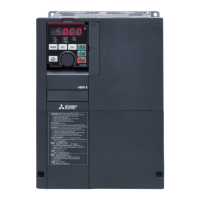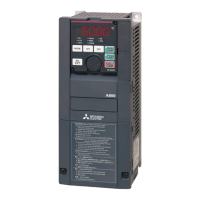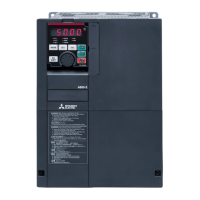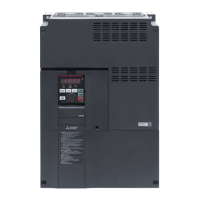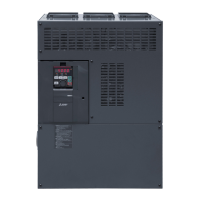Main circuit terminals
INSTALLATION AND WIRING
37
2
2.5.5 Earthing (grounding) precautions
• Always earth (ground) the motor, the inverter, and the converter unit.
Purpose of earthing (grounding)
Generally, an electrical apparatus has an earth (ground) terminal, which must be connected to the ground before use.
An electrical circuit is usually insulated by an insulating material and encased. However, it is impossible to manufacture an
insulating material that can shut off a leakage current completely, and actually, a slight current flows into the case. The
purpose of earthing (grounding) the case of an electrical apparatus is to prevent operators from getting an electric shock from
this leakage current when touching it.
To avoid the influence of external noises, this earthing (grounding) is important to audio equipment, sensors, computers and
other apparatuses that handle low-level signals or operate very fast.
Earthing (grounding) methods and earthing (grounding) work
As described previously, earthing (grounding) is roughly classified into an electrical shock prevention type and a noise-
influenced malfunction prevention type. Therefore, these two types should be clearly distinguished, and the following work
must be done to prevent the leakage current having the inverter's high frequency components from entering the malfunction
prevention type earthing (grounding):
• Whenever possible, use the independent earthing (grounding) for the inverter.
If independent earthing (grounding) (I) is not available, use (II) common earthing (grounding) in the figure below where the
inverter is connected with the other equipment at an earthing (grounding) point. Do not use the other equipment's earthing
(grounding) cable to earth (ground) the inverter as shown in (III).
A leakage current containing many high frequency components flows into the earthing (grounding) cables of the inverter
and peripheral devices. Because of this, the inverter must be earthed (grounded) separately from EMI-sensitive devices.
In a high building, it may be effective to use the EMI prevention type earthing (grounding) connecting to an iron structure
frame, and electric shock prevention type earthing (grounding) with the independent earthing (grounding) together.
• Earthing (Grounding) must conform to the requirements of national and local safety regulations and electrical codes.
(NEC section 250, IEC 536 class 1 and other applicable standards).
A neutral-point earthed (grounded) power supply in compliance with EN standard must be used.
• use the thickest possible earthing (grounding) cable. The earthing (grounding) cable should be the size indicated in the
table on page 35.
• The earthing (grounding) point should be as close as possible to the inverter, and the earth (ground) wire length should
be as short as possible.
• Run the earthing (grounding) cable as far away as possible from the I/O wiring of equipment sensitive to noises and run
them in parallel in the minimum distance.
NOTE
• To be compliant with the EU Directive (Low Voltage Directive), refer to page 106.
Inverter/
converter
unit
Other
equipment
(I) Independent earthing (grounding).......Good
Other
equipment
(II) Common earthing (grounding).......Good
Inverter/
converter
unit
Inverter/
converter
unit
Other
equipment
(III) Common earthing (grounding) cable.......Not allowed
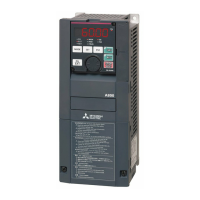
